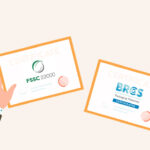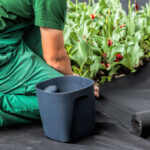Introduction
Woven polypropylene (PP) bags are common in many industries, from agriculture to retail. These bags are made from a strong and flexible type of plastic, perfect for holding everything from grains and fertilizers to clothes and other retail items.
In this blog, we will explore everything about woven PP bags. We’ll look at what these bags are made of, how they’re made, and why they’re so useful. We’ll also discuss the different types of woven PP bags you might come across, what they’re used for, and how to take care of them. By the end of this post, you’ll see why these bags are so important and how they help in various businesses.
Understanding Woven Polypropylene
Polypropylene is a very popular type of plastic because it’s strong and resistant to many chemicals. It’s made up of propylene, a molecule that links in long chains. This linking creates a tough material we use to make all sorts of things, from toys to containers.
To turn polypropylene into a fabric, manufacturers melt the plastic and then push it through tiny holes to create thin threads. These threads are then woven together, like how you might weave threads to make cloth. This process creates a fabric that is very durable and can be used to make bags that hold up under tough conditions. This woven fabric is what we use to make woven polypropylene bags, which are not only strong but also can handle being used over and over again.
Properties of Woven Polypropylene Bags
Woven polypropylene bags are known for their impressive properties, making them a top choice in many industries. Let’s look at some of these key characteristics:
- Durability: These bags are really strong. They don’t rip or tear easily, even when filled with heavy or sharp objects. This makes them perfect for carrying loads that might damage other types of bags.
- Resistance to Tearing: Woven polypropylene is tough. It can handle a lot of stress and strain without splitting or tearing. You can use these bags multiple times, even in tough conditions.
- Water Resistance: Polypropylene doesn’t absorb water, which is a big plus. These bags are an excellent choice if you’re storing or transporting items that need to stay dry. Rain or moisture won’t damage the bag or the goods inside.
- Chemical Stability: These bags don’t react with most chemicals. This property is very important when transporting or storing chemical products safely. It means the bag won’t break down or release harmful substances when in contact with different chemicals.
Comparison with Other Materials:
Polypropylene offers some clear advantages over materials like cotton or paper. Cotton and paper can tear easily and are not water-resistant, which limits their use in rougher environments. Polypropylene bags, on the other hand, stand up to these challenges much better, providing a reliable and safe way to carry, store, and protect various items. Plus, unlike other plastics, polypropylene is recyclable, adding an environmental benefit to its use.
These properties make woven polypropylene bags a versatile and practical choice for many needs. They outperform many traditional materials in durability, safety, and protective qualities.
Types of Woven Polypropylene Bags
Woven polypropylene bags come in several types, each designed for specific uses. Here’s a look at some of the different kinds:
- PP Woven Bags: These PP Woven Bags are the basic form of woven polypropylene bags. Strong and durable, they are often used for packing items like grains, feeds, and other bulk materials. Their simple design makes them cost-effective and versatile for many industries.
- BOPP Bags: Biaxially Oriented Polypropylene (BOPP) bags have a laminated layer that adds extra strength and a glossy finish. This makes them great for packaging products that need a better presentation, like pet foods, fertilizers, and food products. The layer also provides excellent print quality for branding.
- Bulk Bags: Also known as FIBCs (Flexible Intermediate Bulk Containers), these large bags are designed to carry larger quantities of products, often up to thousands of pounds. They are commonly used in chemical, mineral, and construction manufacturing industries. Bulk bags often have lifting loops for easy transport with machines like forklifts.
- Block-bottom bags: These block bottom bags stand upright thanks to their unique block-shaped bottom. This feature is especially useful for retail packaging, providing stability and a good display. They’re commonly used for packaging cement, flour, and sugar.
- Paper Poly Bags: These paper poly bags have an outer layer of paper with an inner polypropylene lining. The paper layer allows for better printing and aesthetics, while the polypropylene provides moisture protection and strength. They are often used for products that need a good appearance and durability, such as animal feed, seeds, and food ingredients.
Each type of woven polypropylene bag is tailored to meet different needs, offering unique features and designs for various storage and transport requirements. Whether for heavy-duty hauling or attractive retail packaging, a woven PP bag is designed for the task.
Common Uses and Applications
Woven polypropylene (PP) bags are used in various industries because they are strong, versatile, and cost-effective. Here’s how different sectors make use of these bags:
- Agriculture: In farming, woven PP bags are essential for storing and transporting agricultural products like grains, seeds, and fertilizers. They protect these items from moisture and pests, ensuring they stay safe and intact until they reach the market or are used on the farm.
- Construction: These bags are also very popular in the construction industry. They are used to carry materials like sand, gravel, and cement. The strength of woven PP bags makes them ideal for holding heavy loads, and their resistance to tearing helps prevent spills at construction sites.
- Retail: In retail, smaller woven PP bags are often used for packaging goods like rice, sugar, and flour. These bags can be printed with attractive designs and logos, which makes them great for branding and displaying products on store shelves.
- Logistics: Woven PP bags are a top choice for shipping and logistics because they can handle heavy weights and rough handling. They are used to pack and transport goods over long distances, protecting them from dirt, water, and damage during transit.
Woven polypropylene bags are a top choice in many industries because they are strong, versatile, and affordable. Whether it’s in agriculture, construction, retail, or logistics, these bags offer the durability and protection needed for a wide range of products. They help keep items safe from moisture, pests, and damage, making transportation and storage worry-free. By choosing woven PP bags, businesses can ensure their products are well-protected and keep costs down. This makes woven PP bags an essential tool for anyone needing reliable and efficient packaging solutions.




